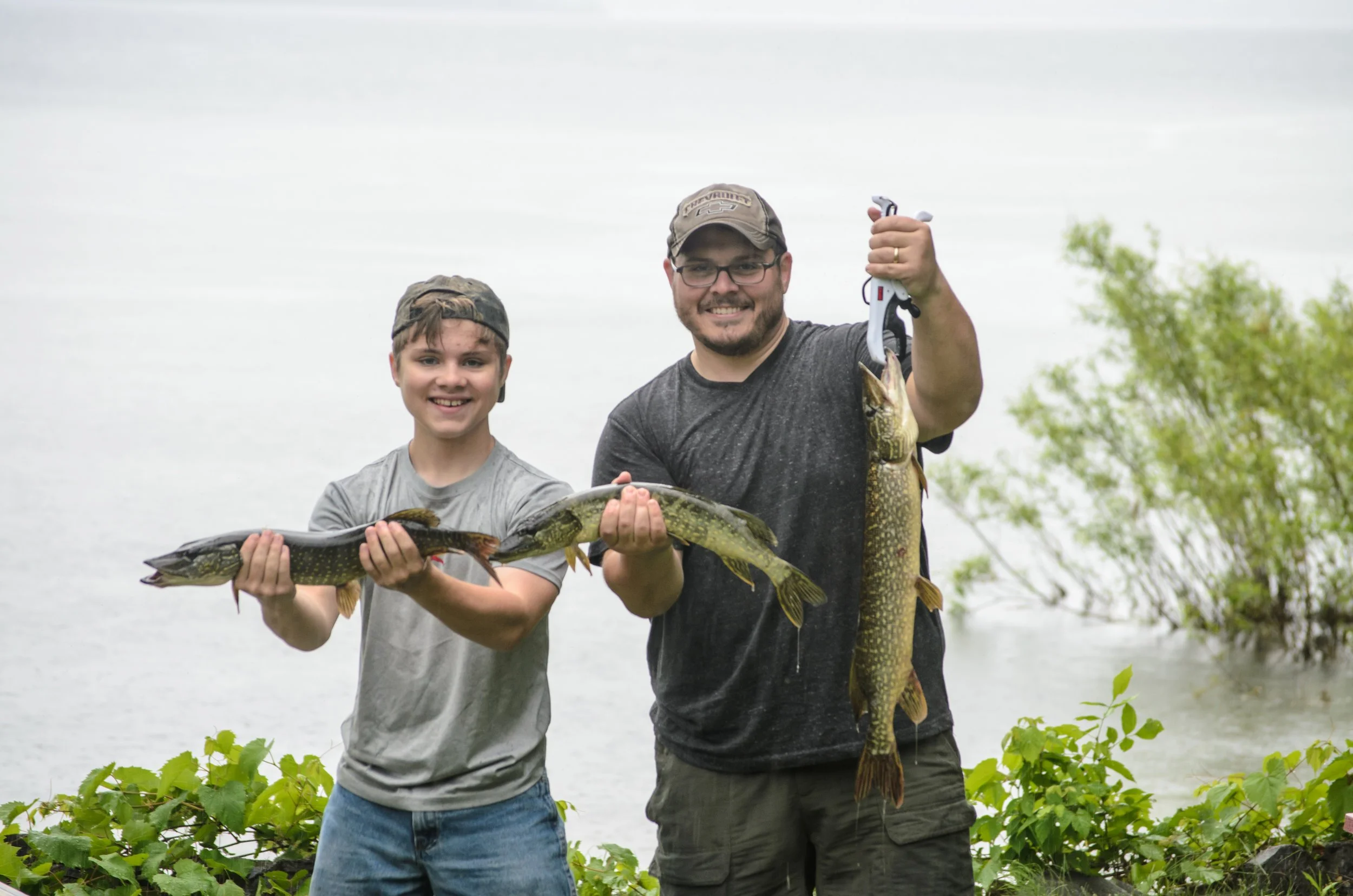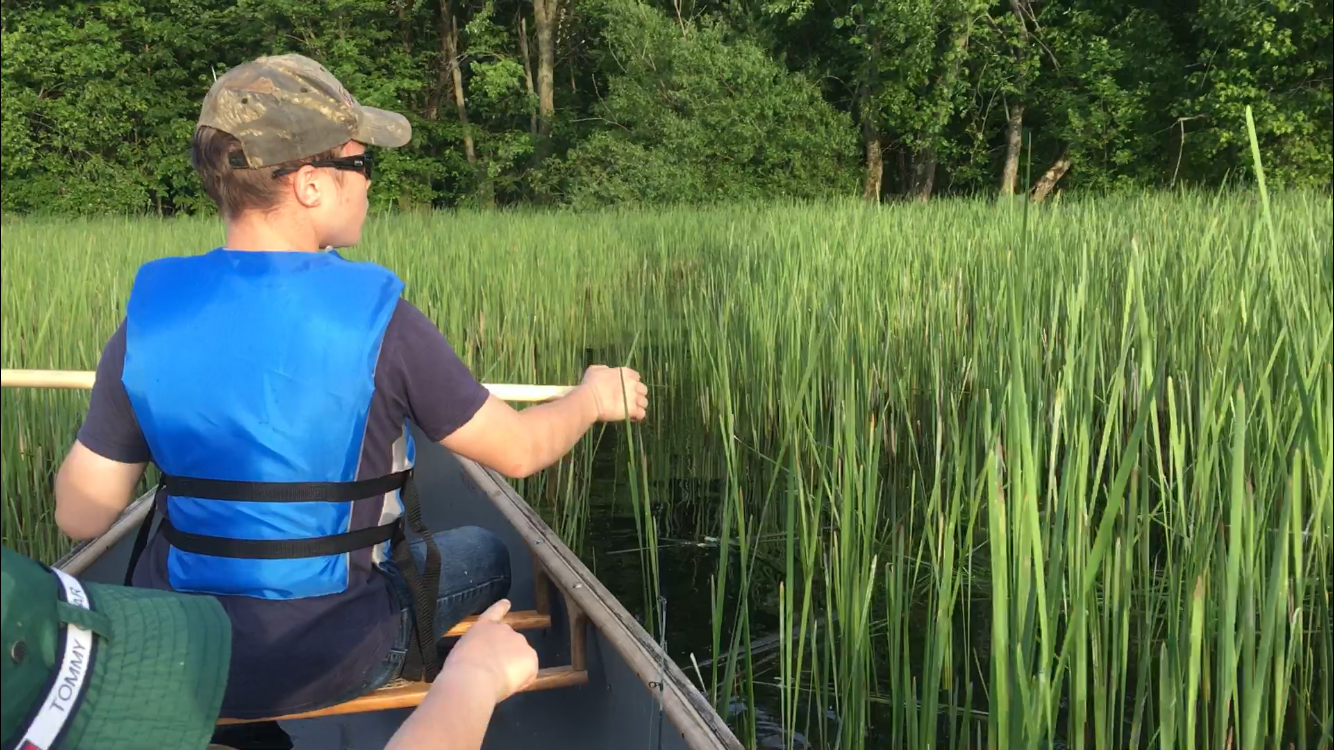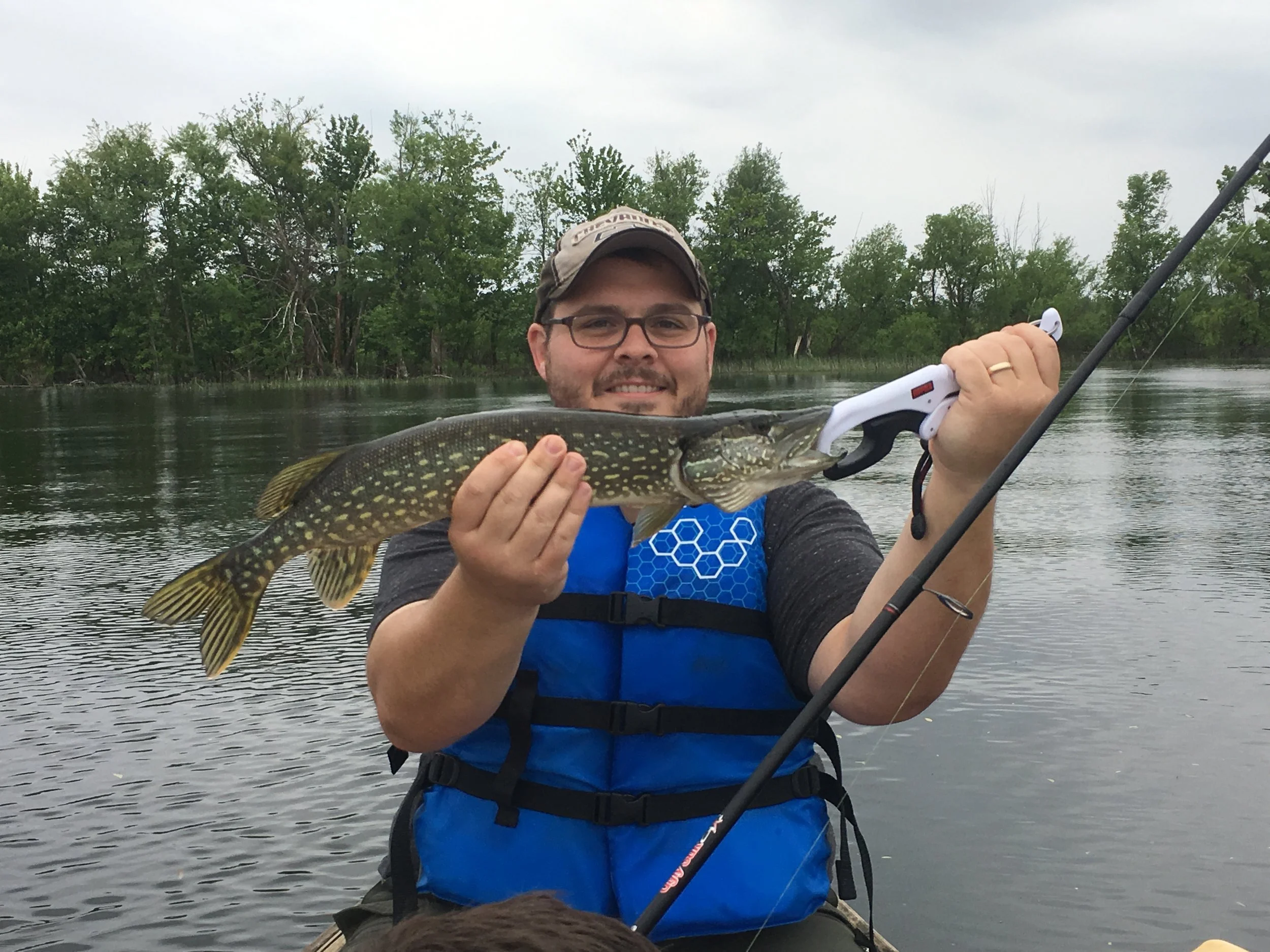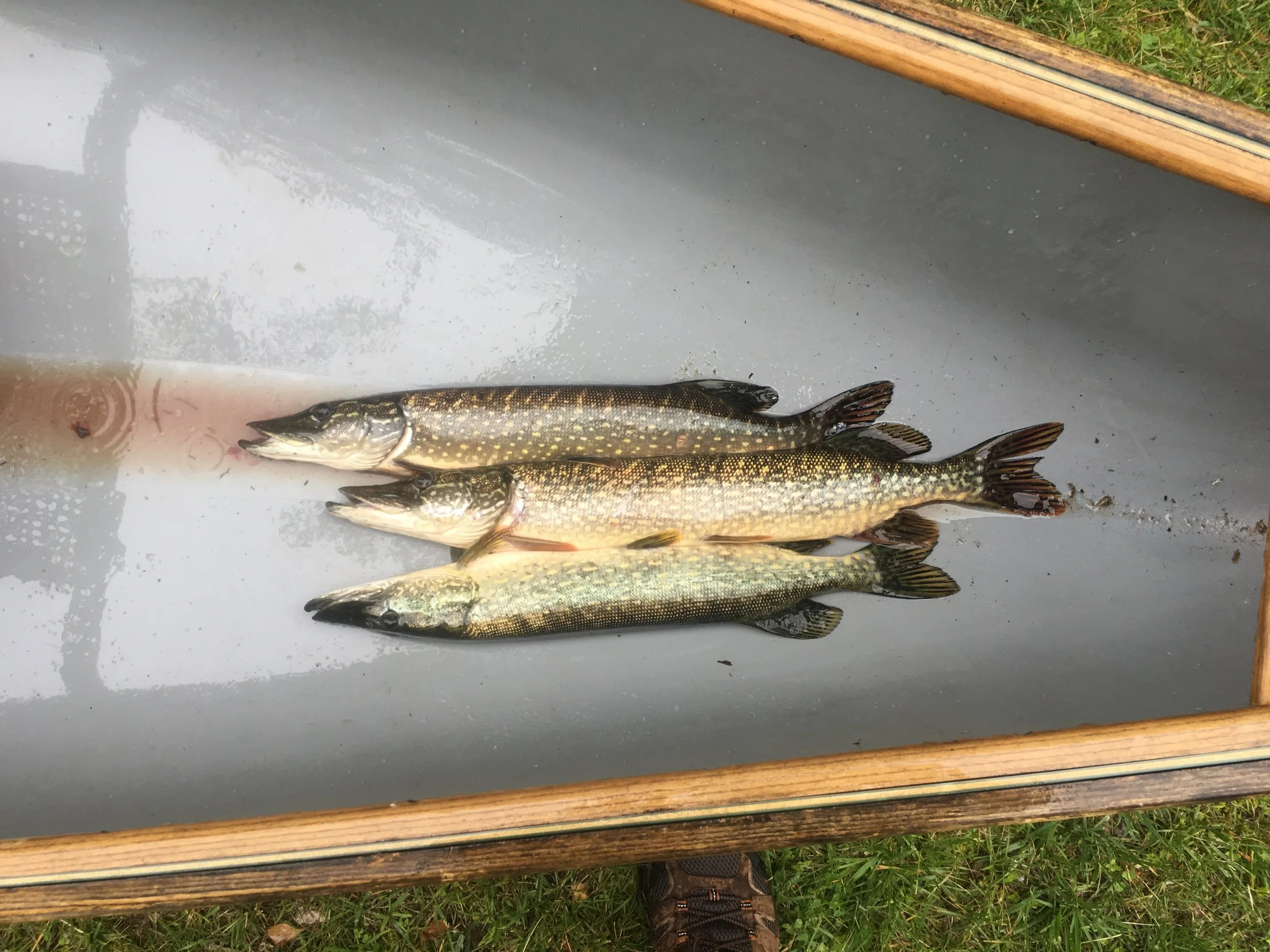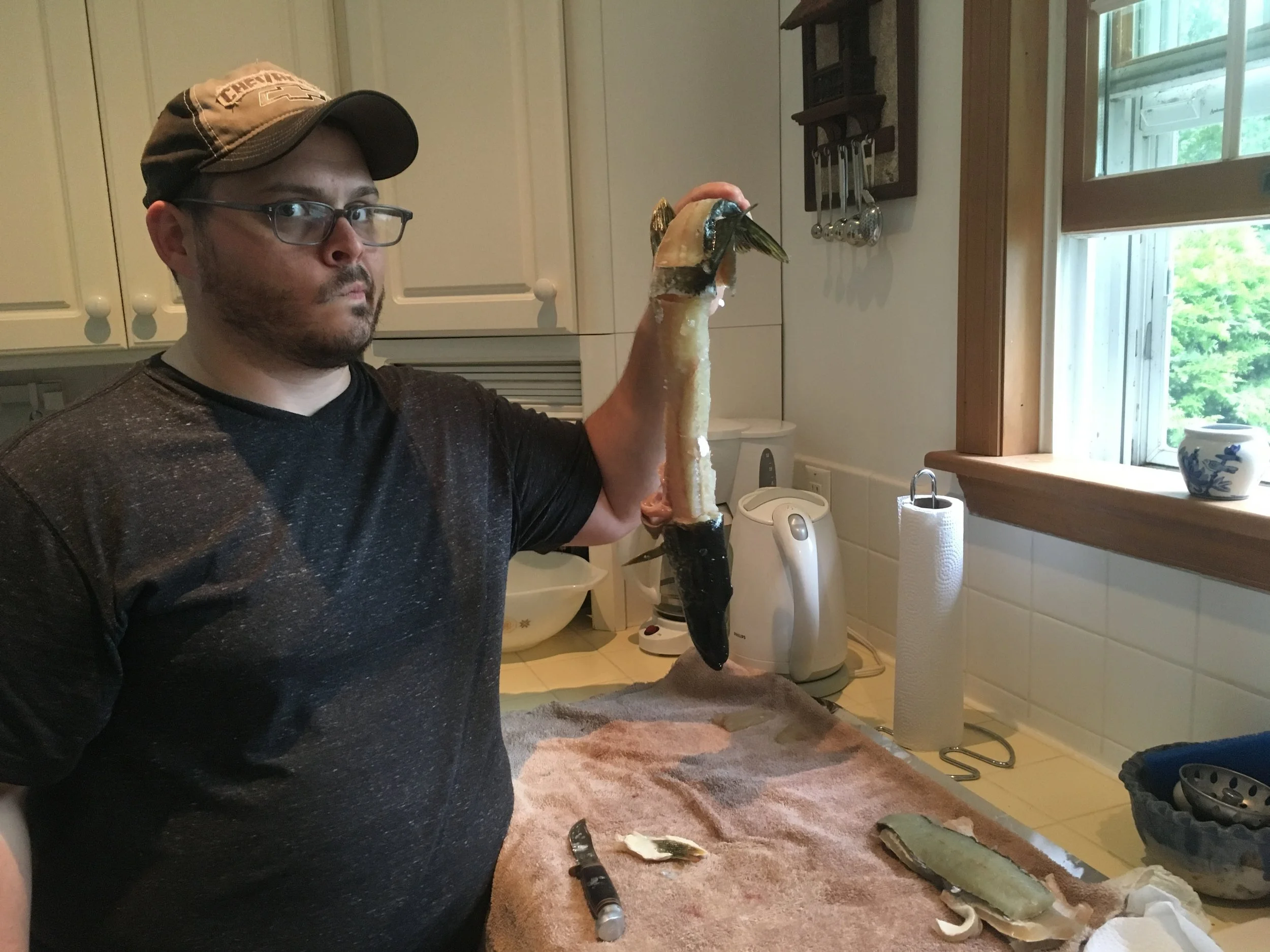Skill Collecting: How to Fish for Northern Pike
How to Fish for Northern Pike
…and not get slimed.
Northern Pike is one of the most sought after fresh water game fish. The reason for this is the fight they give you. They’re fun! Pike are very aggressive and very fast. When you hook one of these prized fish, you can expect the excitement to be fever-pitch.
Step One: Find the right spot
We didn’t fish IN these weeds for obvious reasons. Next to the weed patches is just about right.
Northern Pike like cold, clear water with plenty of weed cover, so you’ll often find them in the shallows where there’s plenty of plant life. When they spawn, it’s important that they have places for the young fish to stay hidden since mature Pike are actually cannibalistic. They are also an ambush predator, meaning they hide in the weeds waiting for prey so they can burst out at them. When they suspect possible shortages in their food source, they’ll get more active, like just before stormy weather. They’ll bite on a sunny day too but preferably when the sun is at a low angle to the water like early morning or late evening.
Step Two: Pick your gear
Sometimes fishing gear choices are subjective, so here are my personal picks.
I recommend getting a Lip Gripper (A). Pike are carnivorous, so they have a lot of sharp backward facing teeth and you don’t exactly want to use your fingers to “lip” the fish. For this reason, I also recommend using a heavy leader. If the fish swallows the lure (called “gut-hooking”), the line will be running out of it’s mouth, raking across it’s sharp teeth every time it shakes it’s head. Thick leader will hold up to this better. Ideally, you can set the hook right away and hook it in the corner of its mouth, but you never know. I recently gut-hooked one and heavy leader saved the day. If you gut-hook a fish, it’s also helpful to have a long hook-removing pliers (B).
When it comes to lures, these fish are not particularly picky, especially when the bite is on. They’ll eat almost anything. Some people use live bait for Pike, which I’ve not used, so I can’t really speak to its effectiveness.
If you’re using lures though, my personal recommendations are as follows:
(C) Soft plastic, weedless worms. These are the best value. They cost $1.32 at Walmart and they have prongs that reduce snags on weeds, which is likely where you’ll be fishing for Pike. The downside is that Pike teeth can be rough on the lure. However, these lures are seriously high-percentage for bites.
(D) Rapala jointed crankbaits. The jointed action is quite the attention getter. This one is the J-9.
(E) Kastmaster silver spoon. Make sure to polish it up for a mirror finish. I think the ones with the little bit of bucktail are better than the ones without. These are not weedless of course, so you’ll need to retrieve them fast enough to keep them above the submerged weeds but slow enough to get them to a depth where the fish will see them. I would avoid using these from shore. On a boat you can at least go to a snagged lure to get it back. The silver spoon is a great producer.
(F) The Mepps Musky Killer. This is technically a spinner, like a giant rooster-tail. It has a treble hook which is preferred for Pike.
(G) Spinners. This one pictured is by Strike King. I’ve not had a lot of success with this one despite people saying they work. I include it only because you might fair better with it than I do.
I’d say that my top choices would be the soft plastic worm and the Kastmaster silver spoon.
Step Three: Land the Fish.
When fishing for any specific type of fish you want to keep your drag adjusted accordingly. The drag allows line to be pulled out by the fish under tension. You can adjust this tension on the reel. Too loose and the hook can fall out of the fishes mouth and foul up your reel with line snarls or “birds nests”. Too tight and the line can snap. It should apply just enough tension to make the fish tired.
Remember that when fishing for Pike, you’re not just accounting for the weight of a potential fish, but also for the force such a fish can apply by resisting. This often exceeds their body weight by a good bit, especially when they jerk their head back and forth. That’s when lines can snap. What I use is plenty, perhaps overkill.
I personally use 20lb test Spider-wire Braid. The average Pike is around 20-22 inches or around 2-2.5lbs. You could use as little as 10lb-12lb test monofilament and you could still land the fish as long as you use the reel drag effectively. My son hooked one the other day and accidentally had the drag all the way tight. The line snapped immediately. He was using 14lb test monofilament line. If you’re looking for record breaking, trophy Pike (upward of 50-60 inches long), just disregard this post, get everything bigger, and hire a guide.
When you land the fish, use your trusty Lip Gripper and hook pliers and your fingers should be fine.
Step Four: Harvest the Fish
Not record breakers, but they got a kick out of sliming the canoe.
One final note on landing Pike, beware the slime! Pike respond to being caught by producing copious quantities of clear mucous all over their bodies. If you plan to eat the fish, it’s best to kill the fish by bleeding it right away. This will stop them from producing as much slime. Insert a knife straight into the front of its “neck” just behind where the gill plates meet. That will dispatch it instantly. When you get the fish home, you can clean it with vinegar and salt to remove any residual slime. Of course, there’s always catch-and-release.
You get get a fair amount of meat off of an average Pike. The three shown here fed our family of four with leftovers. You can get five good fillets from an average sized Pike, but dealing with the bones can be more challenging than with some other fish. Here’s a good tutorial on how to do that. This is why many just release them despite the meat being very mild and some of he best tasting freshwater fish out there. Pike is even milder than Bass in my opinion. You can do a quick search for the recipe of your choice.
It can be tricky getting past all the bones.
You will have to leave some of the meat behind because of the “Y-bones” in Pike, but it still yields plenty.
Do you have any good fish-stories? Let me know below!

